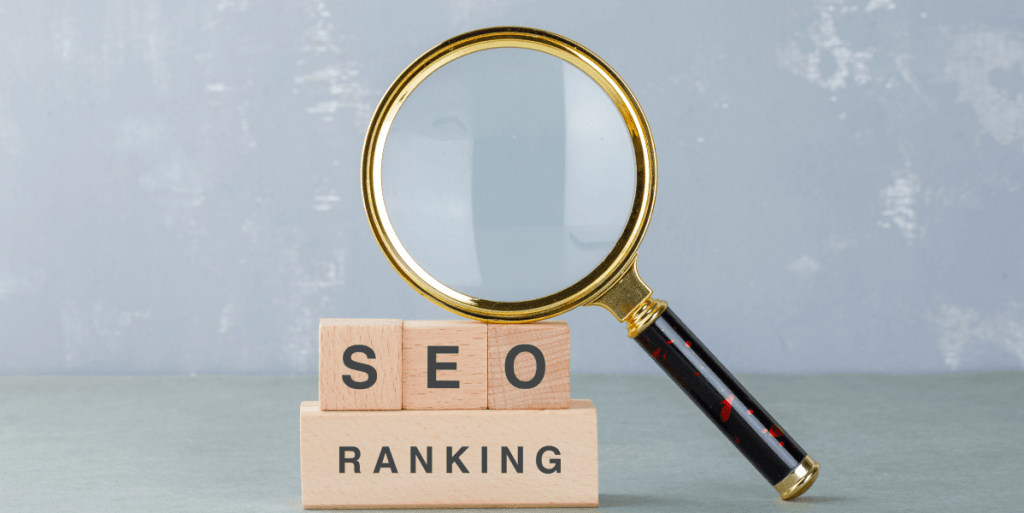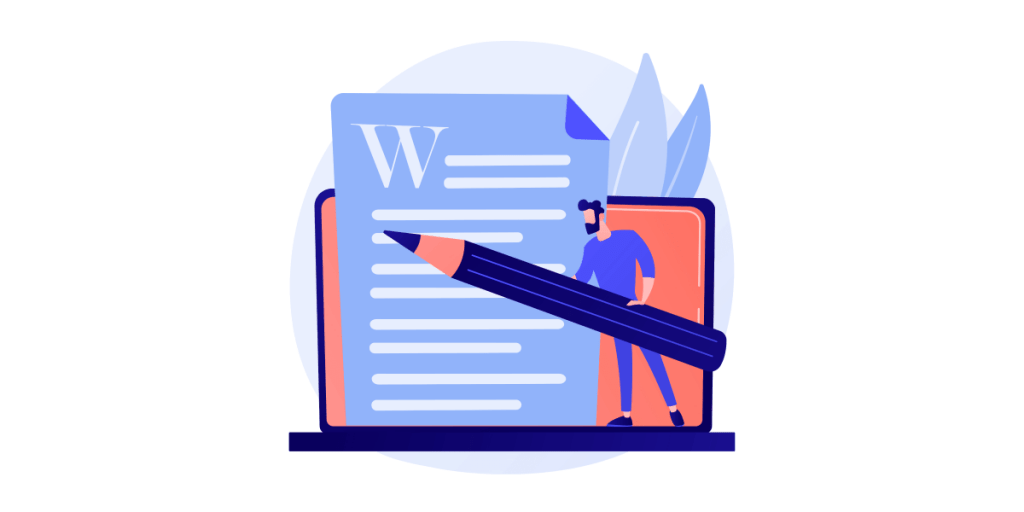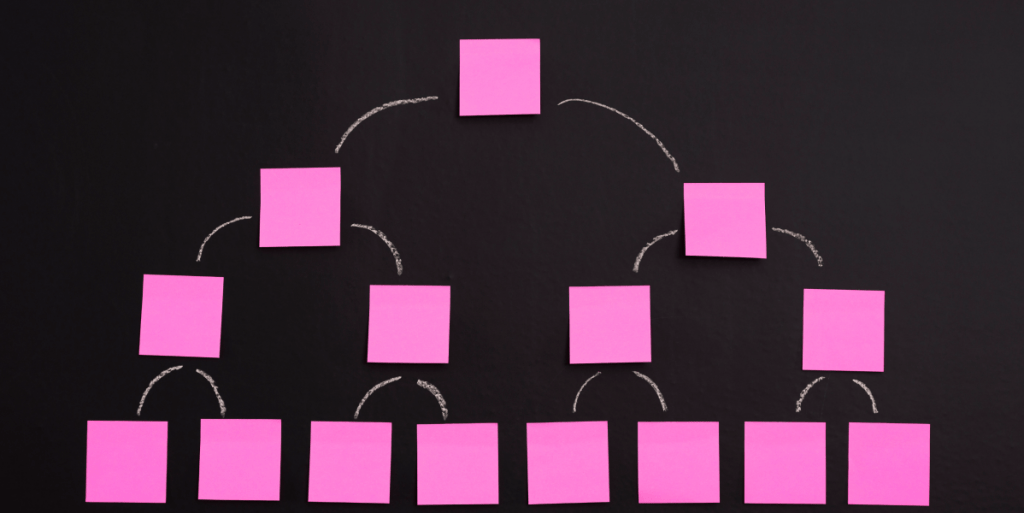Everything You Need To Know About On-page SEO Best Practices
The truth is that if you don’t rank in Google’s top 10 results for your target keywords, your website will not reach your target audience. Succeeding in organic search these days requires digital marketing actions and optimizing a series of factors that search engines consider essential (technical SEO, on-page SEO and off-page SEO). Based on HubSpot’s statistics, 75% of online users never go past the first page of the search results. This is the reason why it is crucial to rank on the first page of Google. Over the years, the focus was towards off-page SEO techniques and technical elements, but the reality is that off-page SEO won’t bring the wanted results if you ignore and don’t focus on your website’s on-page SEO.
In this article, we will cover what is on-page SEO, why it is important, which are the ranking factors you should focus on, and how to apply on-page SEO best practices to make sure your website will attract the right audience and increase your conversion rates.
What Is On-Page SEO?

On-page SEO, also known as on-site SEO, represents the process of optimizing multiple front-end and back-end components of your website so it can rank in the search engines and bring new organic traffic. On-page SEO includes components such as content elements, HTML elements and website architecture elements. As we mentioned above, Google’s ranking algorithm focuses on three main factors: on-page, off-page and technical SEO. Off-page SEO involves social sharing, external linking, and more. Technical SEO represents all the SEO elements that do not include on-page or off-page actions, such as site speed, mobile-friendliness, structured data, etc. The “SEO trinity” sections are not clearly delimited, and some SEO elements overlap.
Why Is On-Page SEO Important?

On-page SEO is important because it gives Google all the information about your website, content, and how you bring value to your audience and customers. This SEO technique helps you optimize your site for people and search engine bots. Just creating and launching your website is not enough, as your target audience will not find your business. Google and other search engines will not rank you. Therefore, you must optimize it to increase your search engine rankings and attract new traffic. Tweaking and changing the on-page search engine optimization elements is important because, this way, Google will identify if your website is relevant to a user’s search query.
As the search engine algorithm becomes more sophisticated, we recommend focusing on content relevancy and semantics for the search engine results page (SERP). First, you need to understand the user intent (what are your users looking for when they type a query). Second, you must deliver the search results that meet your user’s search intent. These results can be informational, navigational or transactional.
We think that on-page SEO should be part of your digital marketing strategies. Make sure you offer valuable content to your audience. Your website elements such as text, images, video, audio are visible to users, and HTML tags, structured data, etc., are visible to search engines. Focusing on optimizing your website according to the latest best practices will guarantee a boost in traffic and a growth in search rankings.
Every part of search engine optimization is essential, and it is up to you how you are going to treat it. But keep in mind that it is necessary to execute your strategy correctly. Let’s see now what are the on-page SEO elements that you should focus on.
What Are On-Page SEO Ranking Factors?

On-Page SEO ranking factors significantly impact your page’s capacity to rank high if optimized correctly. The most important on-page factors that contribute to search engine rankings are:
URLs
Along with internal linking (we will discuss this a bit further), SEO specialists should ensure that the URLs reflect the website’s category hierarchy. Your URL structure should be like this: https://www.yourwebsite.com/maincategory/subcategory/product. This URL showcases the hierarchy of the information on the page. Search engines use this information to determine the relevancy of the web page. We recommend building your URL structure like this because search engines need a unique URL for every piece of content to crawl and index it. If your URLs are like this https://www.yourwebsite.com/ptgf6739 (includes letters and numbers that don’t make real sense), neither users nor search engines will understand your page. The reference ptgf6739 is not something that an online searcher will look for. Therefore, the information provided by the URL has no value to search engines.
It would be best to keep in mind that URLs in the mobile and desktop SERP are shown above the title tag. This makes your URL more important. In this blog post from Google Search Central, you can find more relevant information about building your URL structure and how to do it.
Title Tags
We believe that title tags are the second most important on-page SEO factor, after your page’s content, because it gives search engines and users a high-level overview over what your page is all about. We suggest using your main keyword at the beginning of your title tag as it has more weight in Google’s results pages. Use the keyword at the beginning of the title only if it makes sense, but the closer your keyword is to the front of your title, the better. If you already have your keyword research in place, put your plan to action. If you don’t know how to do keyword research, here is a friendly step-by-step guide on keyword research, or drop us a message, and we can do it for you.
Remember that title tags tell search engines what the page is about and why your website is relevant to that specific keyword or keyword phrase. As your URLs, your title tags should be unique for every single page on your website. In the SERP, the keywords or keywords phrases get highlighted if they match a user’s search query. This will increase your website’s visibility and click-through rate, therefore, will attract new organic traffic to your online business.
Meta Descriptions
Meta descriptions are the page descriptions that appear under the title tags in the SERP. Since the beginning of SEO tactics, meta descriptions or meta tags have been a vital optimization keypoint. Even though they are not considered a direct ranking factor, they influence whether the users will click on your page or not. Meta descriptions are copied over to social media when your content is shared. This way, they can encourage social click-through rates. Optimizing your meta description will help improve your click-through rate (CTR). They will offer an overview of what your page is about. Meta tags summarise the content available on your web’s page and influence the perception of the quality of the search result.
Page Content

The page content is what makes a website deserving of a high position in search results. It is what users want to read. Thus, it is crucial for search engines and visitors alike. High-quality content is vital. From an SEO perspective, valuable content has two attributes: it should give users what they are looking for and be linkable.
Content is the brick and mortar of a great website. It is imperative to be unique and relevant, as content is the one that makes or breaks a website after a Google core algorithm update. This factor is vital to any online business that wants a high position in Google rankings, can save you from being penalized and suffer a rank decrease. We strongly recommend you include keywords, long-tail keywords, keyword phrases in your page’s content and use content writing tools such as Frase and Grammarly to ensure the correctness of your content piece.
Good content is also linkable. This means people can link to it, and they can share it. Make sure your content is available to both users and search engines.
Content gives users a reason to visit your website. On-page SEO content revolves around using keywords in headings and paragraphs, breaking your content into relevant sections, completing your content with related images or infographics, ensuring your texts are spelt correctly and the grammar is on point. Strive for creating high-quality content that is trustworthy and authoritative.
Header Tags and Keyword Frequency
A header tag is the text format H1 tag and is like the subject line of your web page. We recommend using your primary keyword phrase only once in the header tag. The H1 tag is used to drive unique traffic. If you have multiple sections, we recommend using H2 tags or also known as the second header. The purpose of the header tags is to help Google understand the structure of your website page.
The keyword frequency refers to how many times your keyword appears in your content. Imagine you have a page that Google thinks is about a specific keyword, but you only use it once in your content. In this case you Google cannot be very confident that the page is about that keyword. Mentioning your keyword ten times will give Google more reasons to understand your page’s topic.
Internal Linking
Internal linking is very important for SEO, especially when you want to link from high-authority pages on your site to pages that need a little bit of help. We recommend using a keyword-rich anchor text for internal linking. Our articles link other blog posts or our service pages to help our pages grow their authority. You can use SEO tools such as Ahref to identify the pages on your site with the most link authority. After that, you can add a few internal links from those pages to a high-priority page on your website. The best example of internal linking is Wikipedia, as they add lots of keyword-rich internal linking to every page.
Image ALT Tags
An image alt tag is the name of the image. All images should have appropriate alt tags, so the search engine crawler understands what the image is about. The alt tags are also suitable for accessibility. We suggest including your primary keyword or keyword phrase in the name of your image whenever possible, but don’t overdo it. Naming your images is also SEO-friendly. Image search has become more widely used. Therefore, you can bring more valuable traffic to your website.
Structured Data

Structured data, also known as schema markup, is the process of reinforcing your website’s source code to make it easier for Google and search crawlers to find and understand the different content elements. Even though schema markup is considered a technical SEO, optimizing it contributes to a better on-page experience for your website visitors. The purpose of structured data is to add additional pieces of content to the search results page. Besides the standard title and description, schema markup includes elements such as product price, user ratings, product availability, publication date, etc. Users can find more important information at a glance, and your search results become more eye candy. If done right, it can improve the click-through rate, and we consider it a must for eCommerce websites.
On-Page SEO Best Practices

Now that we have talked about the most important on-page SEO ranking factors, let’s explore the best practices for each on-page ranking factor.
- URLs – make them short; include a keyword in every URL of your website; make your website navigation simple; remove any extra or unnecessary words; use HTTPS – Google sees SSL certificates as a positive ranking factor.
- Title Tags – keep it under 70 characters, otherwise, Google will cut off your title on the results page; mobile search results show up to 78 characters; make it relevant for your page; do not use all caps; you can use your brand in the title; use emotions in your title tag if possible, but avoid words such as “powerful” or “insane”, as they might look clickbaity.
- Meta Descriptions – write attractive descriptions as they are like mini advertising for your website; keep them under 160 characters; do not copy and paste your description; try to write unique ones for each page; do not use quotes because Google cuts them out of the meta descriptions; use your main keyword and one secondary keyword.
- Page Content – make your content easy to read; write short paragraphs – three sentences long; use bullet points and bolding, but don’t overuse them; align your content with user intent (search intent); create long-form content and evergreen content; add engaging visual content; write for your audience, not for search engines; develop relevant content that people what to share; include CTAs (call to actions).
- Header Tags and Keyword Frequency – use your main keyword in the header tags; use header tags (H1 to H6) to better structure your content’s page; keep the header tags consistent; avoid keyword stuffing, otherwise, Google will penalize your website.
- Internal Linking – select a good anchor text (keyword) when linking to another page on your website; use internal linking only if it’s relevant; let’s say you offer digital marketing services. Your anchor text should be digital marketing, not on click here for our digital marketing services.
- Image ALT Tags – name your images as specific as you can (if the image is of a black cat, for example, name it black-cat.jpg, not cat.jpg); use dashes “-” between the words, instead of underscores “_”; do not use non-alpha characters (%, &, $, etc.) in your image names; keep it shorter than 125 characters; use keywords, but avoid keyword stuffing.
- Structured Data – move to HTTPS; read the Structured Data Markup Helper to create schema markup for your site correctly; use Google Search Console to find information and warnings about potential issues on your website.
Our Advice for On-Page SEO

On-page SEO it’s all about content, its quality and relevancy. Content creators know that the key to successful content is crafting web pages that answer searcher’s questions. Here is our advice on making the best of your website and giving your target audience and search engines exactly what they need.
- Identify how your target audience is searching for your content. Start by doing keyword research and group relevant keywords that refer to similar topics and intent. Those groups will determine your pages. Do not create individual pages for every keyword. Take a look at the SERP for your keywords or group of keywords to determine what type and format your content should be.
- Avoid low-value tactics. Your content should answer user’s questions, guide them through your website, and help them understand your website’s purpose. We recommend writing content for users first and second about SEO rankings. The low-value tactics that we recommend avoiding are:
- thin content – when your approach is to have a web page for every single iteration of your keywords to rank on the first page for those specific queries; or have similar pages for every city or region you want customers. This practice will lead to low-quality content across your website. Google is not supporting these websites, and its algorithm update from 2011 (the Panda Update) drastically penalized low-quality content pages. Google is clear about having comprehensive pages on a topic and recommends avoiding multiple, weak pages for each keyword variation.
- duplicate content – exactly as it sounds, duplicate content is copy/pasted content shared across domains or between multiple pages of a single domain. The concept of scraped content refers to a shameless and unauthorized use of content from other websites. We strongly recommend avoiding taking content from other websites and publishing it on your website or just lightly modifying it without adding any value or original ideas to it. If you must take a piece of content and duplicate it for your internal or cross-domain usage, Google suggests using a rel=canonical tag to showcase the original version of the content. We highly recommend you keep your content unique and valuable.
- cloaking – having hidden text in your HTML code, visible only for search engines, is a violation of search engine’s guidelines and best practices. When a website uses this tactic, search engines will prevent those pages from showing up and ranking in the SERP.
- auto-generated content – or programmatically content, used to manipulate search engines and not helping users is the most offensive form of low-quality content. Avoid it at all costs.
- Use NAP citations for local SEO. Display the Name, Address, and Phone number accurately and consistently throughout your website’s content. Usually is placed in the footer or the header of a website and on the contact us page.
- Use redirections when you remove or rename pages. Make sure you redirect the URL to its new location and update all internal links to the new URL source. This way, users and search crawlers don’t have to pass through redirects to get to the page they are interested in. We recommend using 301 or 302 redirects.
- Optimize your images for better page performance. We recommend compressing your images using online tools such as Optimzilla or TinyPNG.
- Optimize your page speed. Page speed is an important ranking factor for desktop and especially for mobile. Here’s our article on how to optimize mobile page speed for a flawless user experience.
In addition to our advice, we have an on-page SEO checklist that will help you not to miss anything when implementing your SEO strategy. More than that, we strongly suggest creating an excel document and keeping track of every change you make. Include every element from this checklist and keep your pages updated. Here is a free on-page SEO template offered by HubSpot to use or create your customized template.
- Start by crawling your website to get an overview of the indexed pages. Focus on web address (URL), page title and page meta description. Paste these three columns into your document.
- Conduct an SEO audit and define the site architecture. This will help you organize and prioritize your web pages.
- Update your URLs, page titles and meta descriptions. Check your page titles to be under 60 characters and your meta descriptions between 155-160 characters. Update them using these best practices and make sure you are not very repetitive with your keywords.
- Double-check and ensure your keyword appears in the URL.
- Use your keyword throughout your website page’s content. Make sure that it sounds natural and fits the context.
- Track your keywords and topics for each page. Define a keyword and a topic for every particular page. This way, you can provide more in-depth and detailed information about the page’s topic. The exception of this practice is your homepage, where you have to summarize what your business is about. Therefore, you will use multiple keywords there. Another exception is the category pages, where you explain what your products or services are.
- Avoid keyword stuffing. Make sure your content is flowy, clear and natural. Otherwise, your website may look and feel like spam to users.
- It is recommended to have a value proposition for each page that presents the page’s purpose.
- Make sure you know your target audience. Define your buyer persona or personas and optimize your website based on their traits and interests.
- If necessary, rewrite your page title to fit better with your new optimizations. The most used templates for title tags is: “Keyword Phrase | Context ” or “Keyword Phrase | Context | Brand Name” or just “Keyword Phrase | Brand Name”. The purpose of a page title is to show what you will find on that page.
- If necessary, rewrite your meta descriptions. As we mentioned before, meta descriptions should be short, include the same keyword as your title tag and URL and act as a mini copy of advertising.
- If necessary, review and update your content. Write for your audience, provide solutions to user’s queries, make sure your content is error-free. Try to have at least 500 words per page, format your content with headers and subheaders, bullet points, short sentences etc., to make sure it is easy to read and understand.
- Add images, videos or infographics. Visual content will add value and will make your content more attractive to users. When adding an image, include a descriptive file name, don’t forget to add image alt-text and compress it before publishing.
- Add internal links. Make sure you use anchor text on your keyword.
- Add external links. Choose to credit trustworthy and credible sources. Google will understand that your website is well-referenced, and your target audience will know that too.
- Optimize your website for conversions. A website’s purpose is to increase revenue and leads number, subscribers, and traffic. Every page on your website is a conversion opportunity and should include at least one CTA (call-to-action).
On-page SEO is an important part of any digital marketing strategy. SEO needs constant attention and improvement, especially when Google is releasing new core algorithm updates. We are here to help you and offer the right advice that your company needs to get on top of the competition. Just contact us, and let’s start building a rock-solid SEO strategy that boosts your rankings and increases your conversions.
Frequently Asked Questions
We recommend applying the E-A-T method. Your content should be written with Expertise, Authoritativeness, Trustworthiness and tailored to your target audience’s needs.
We suggest using Yoast SEO plugin for WordPress and Ahref Webmaster Tools,
Depends. It can take from hours to months. But usually, it takes up to a couple of months to see results.
We recommend starting with a website audit. Continue with analyzing your competition’s on-page SEO, perform keyword research, and follow the checklist on this article.